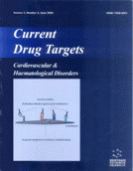Abstract
Atrial fibrillation (AF) is the most common cardiac arrhythmia seen in clinical practice. The understanding of the pathophysiology of AF has changed drastically during the last several decades. Recent observations have challenged the concept of the multiple circuit reentry model in favor of single focus or single circuit reentry models. Atrial electrical dysfunction provides a favorable substrate and transmembrane ionic currents are key determinants. Recent research is focusing increasingly on the atrial structural remodeling, which underlies the development of AF in different pathological conditions. This has led to concepts about how interfering with the substrate might prevent AF development and recurrence. Particular interest has been generated in the role of renin angiotensin system (RAS) blockade in reversing the electrical and structural remodeling of diseased atria. The mechanisms for the preventive effect of angiotensin converting enzyme inhibitors (ACEi) or angiotensin-II (AT-II) type 1 receptor blockers (ARB) in AF are probably complex. They may comprise general haemodynamic changes leading to lower intra-atrial pressure and wall-stress, or reduce in atrial fibrosis, connexin43 over-expression and conduction delay. The promising results of several clinical trials concerning RAS blockade may herald a whole new era of AF treatment, where AF is prevented and treated by modifying its substrate rather than fighting it electrically. This review centers on the pathophysiology of the structural and electrical remodeling in AF, the possible mechanisms by which RAS blockade may reverse electrical and structural remodeling of diseased atria and on the role of ACEi or ARB blockers in AF prevention and treatment that has already been postulated both experimentally and clinically.
Keywords: atrial fibrillation, renin angiotensin system, angiotensin-II, angiotensin converting enzyme inhibitors, receptors, blockers, treatment, substrate, remodeling
 2
2













